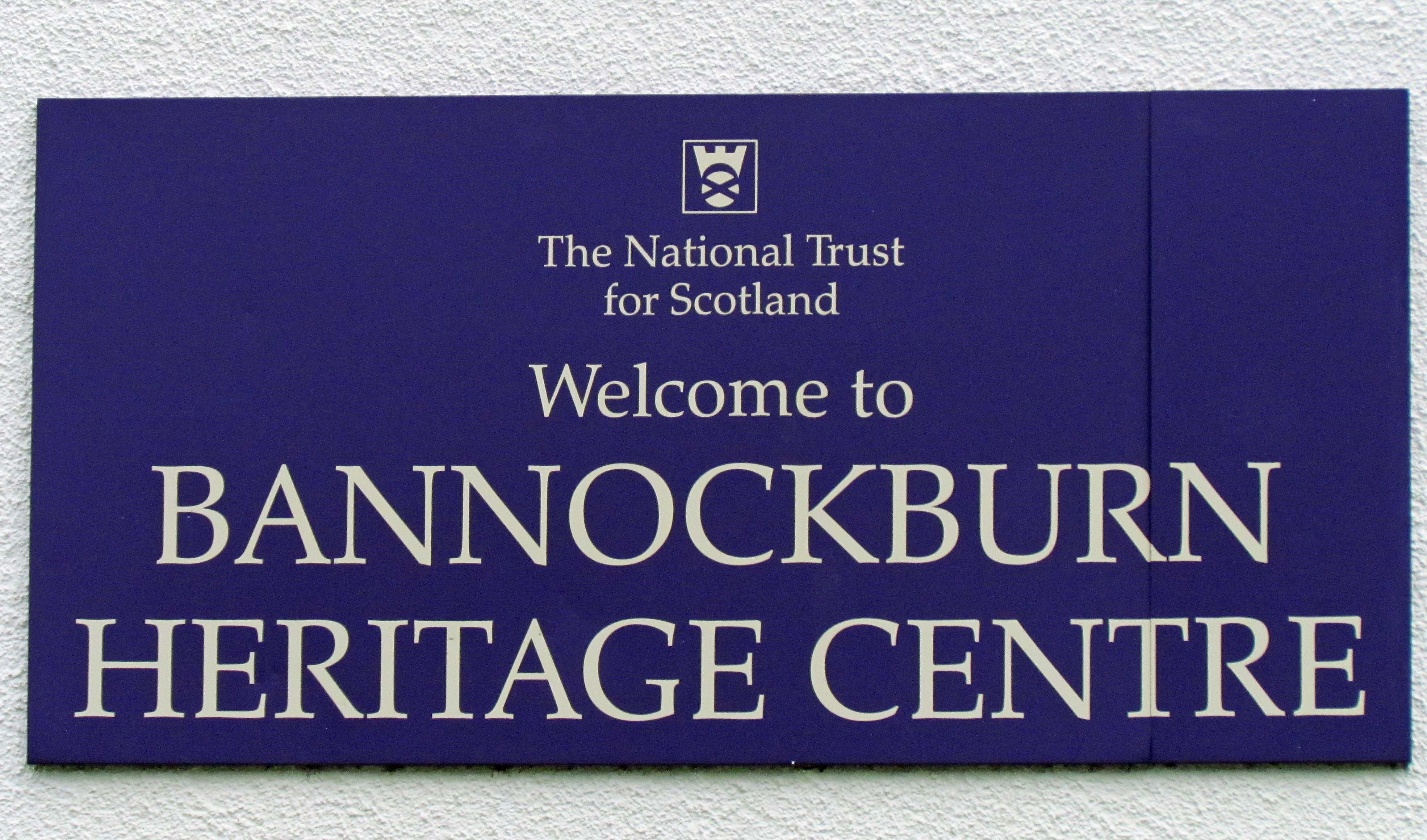
Bannockburn Heritage Center
The Battle of
Bannockburn (BlÓr Allt a' Bhonnaich in Scottish Gaelic) 24 June
1314, was a significant Scottish victory in the Wars of Scottish
Independence. It was the decisive battle in the First War of Scottish Independence.
Around Lent of 1314 Edward Bruce, brother of the Scottish King, began the siege of Stirling Castle. Stirling was of vital strategic importance and its loss would be a serious embarrassment to the English.
The force that left Berwick-upon-Tweed on 17 June 1314 was impressive: it comprised between 2,000ľ3,000 horse (likely closer to 2,000) and 16,000 foot.
The
precise size relative to the Scottish forces is unclear but estimates range from
as much as at least two or three times the size of the army Bruce had been able
to gather, to as little as only 50% larger.
This was a grand feudal
army, one of the last of its kind to leave England in the Middle Ages. King Robert
awaited its arrival south of Stirling near the Bannock Burn in Scotland.
The army might have
numbered as many as 9,000 men in all, but probably more of the order of
6,000ľ7,000. It was gathered from the whole of Scotland: knights and nobles,
freemen and tenants, town dwellers and traders: men who could afford the arms
and armor required. Barbour tells that King Robert turned away those who were
not adequately equipped. For most, such equipment would consist of a spear, a
helmet, a thick padded jacket down to the knees and armored gloves. It is highly
probable that a large proportion of the spearmen had acquired more extensive
armor given that the country had been at war for nearly twenty years.
This is in contrast to
the modern romantic notion of the Scots army, which depicts its foot soldiers
clad in kilts, painted woad and little
else. The balance of the army consisted of archers and men-at-arms. The Scottish
archers used yew-stave longbows and it is not to be thought that they had weaker
or inferior bows but rather had inferior numbers. Consisting
of possibly only 500 archers, they played little part in the battle.
There is
first hand evidence from the captured Carmelite friar, Robert Baston in his
poem, written just after the battle, that one or both sides employed slingers
and crossbowmen. Each of these troop types was indistinguishable from their
counterparts in France or England. Many of the Scottish men-at-arms (recruited
from the nobility and the more prosperous burgesses) served on foot at
Bannockburn.
There is some confusion over the exact site of the Battle of Bannonckburn, although most modern historians agree that the traditional site, where a visitor center and statue have been erected, is not the correct one.
The Scottish victory was
complete and, although full English recognition of Scottish Independence was not
achieved until more than ten years later, Robert Bruce's position as king was
greatly strengthened by the outcome.
A modern, abstract
monument stands in a field above the battle site, where the warring parties are
believed to have camped on the night before the battle. The monument consists of
two semicircular walls depicting the opposing parties. Nearby stands the 1960s
statue of Bruce by Pilkington Jackson. The monument, and the associated visitor center, is one of the most
popular tourist attractions in the area.
"Scots
Wha Hae" is the title of a patriotic poem by Robert Burns. The chorus
of Scotland's unofficial national anthem Flower of Scotland refers to
Scotland's victory.

Robert the Bruce
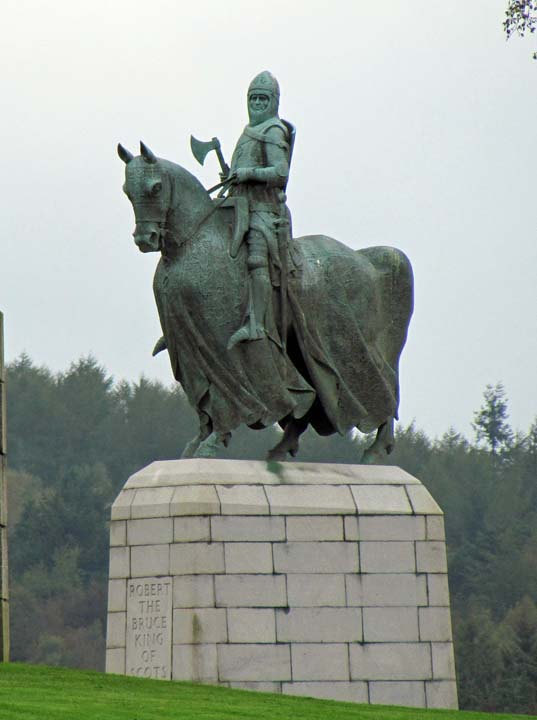
The monument
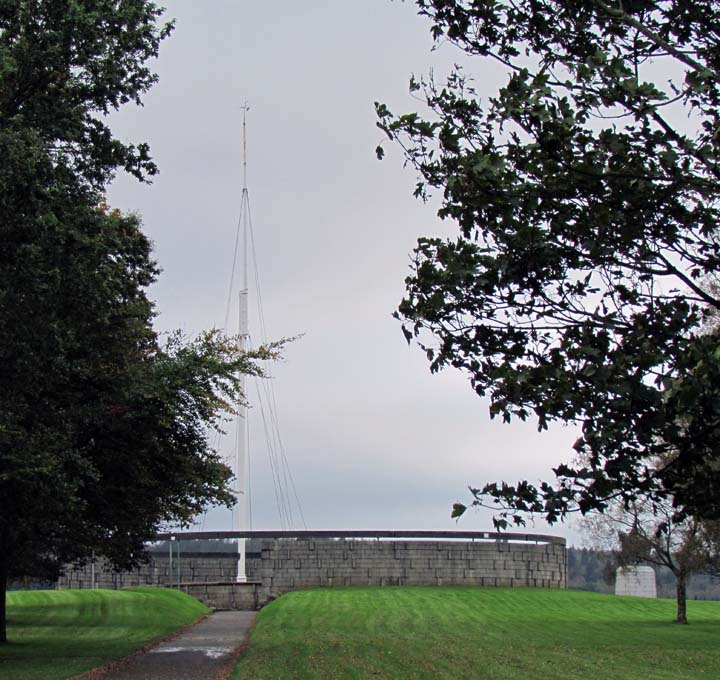
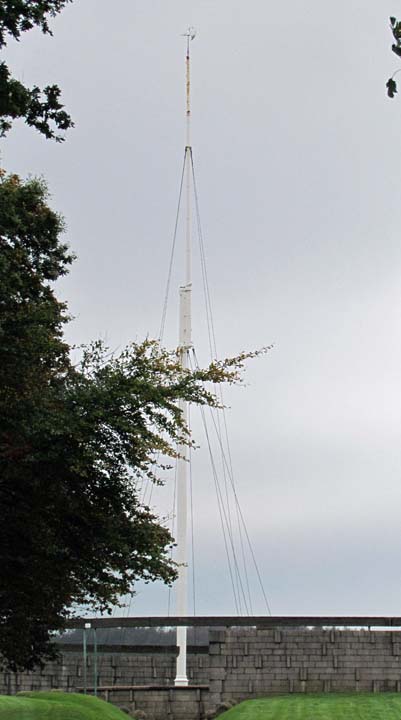
The monument was not that impressive, and as the actual battlefield location is in question -
most believe it was not here at the Heritage Center,
the Visitors Center was a unexpected, pleasant surprise.
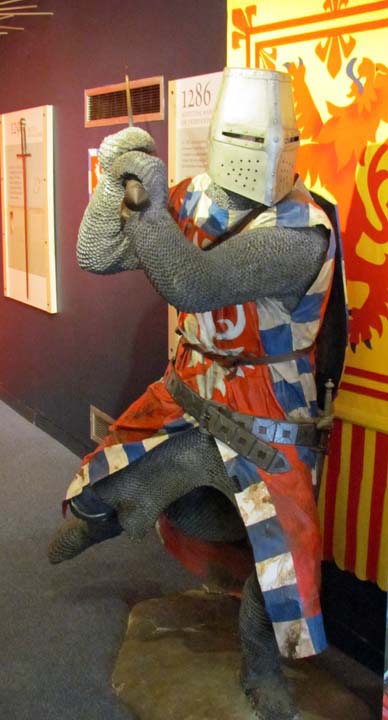
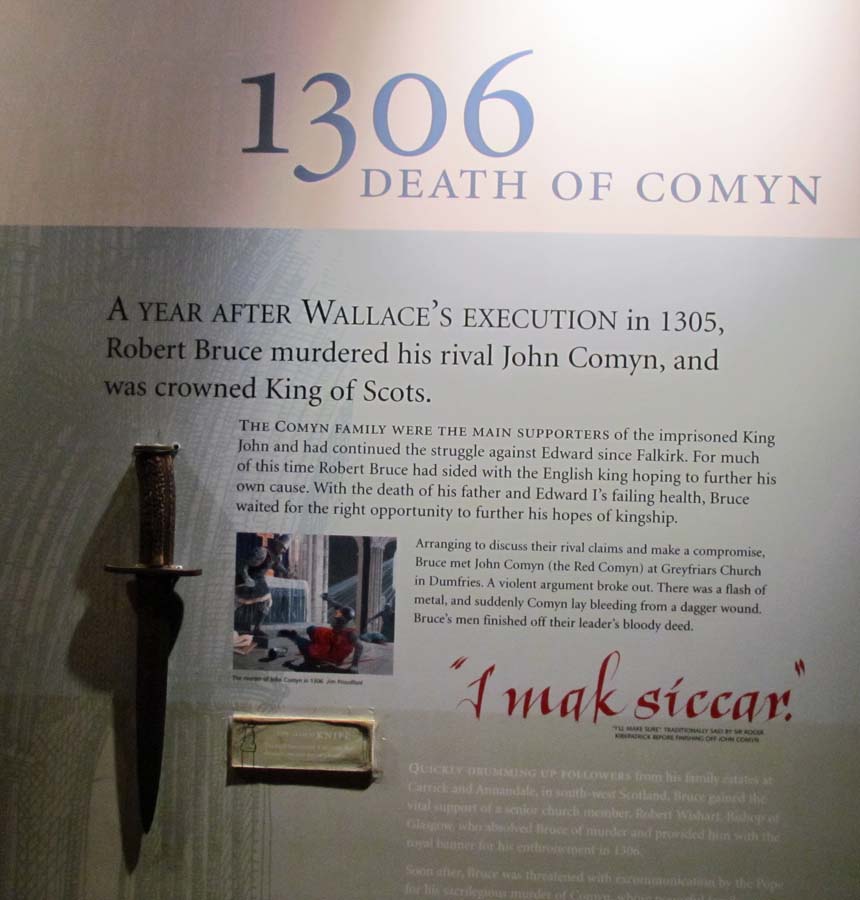
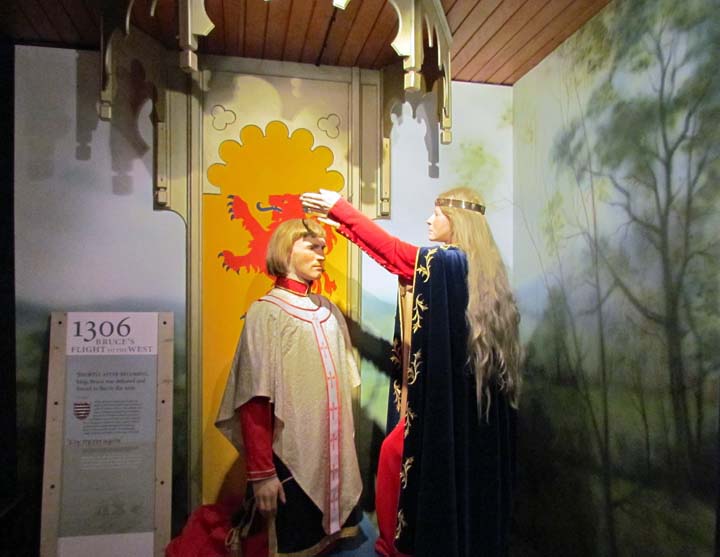
The fighting here had no in kilts and bagpipes - here we have archers, armor and cavalry
The visitor's center has example of armor one can try on -
Of course I did ! Very, very heavy !
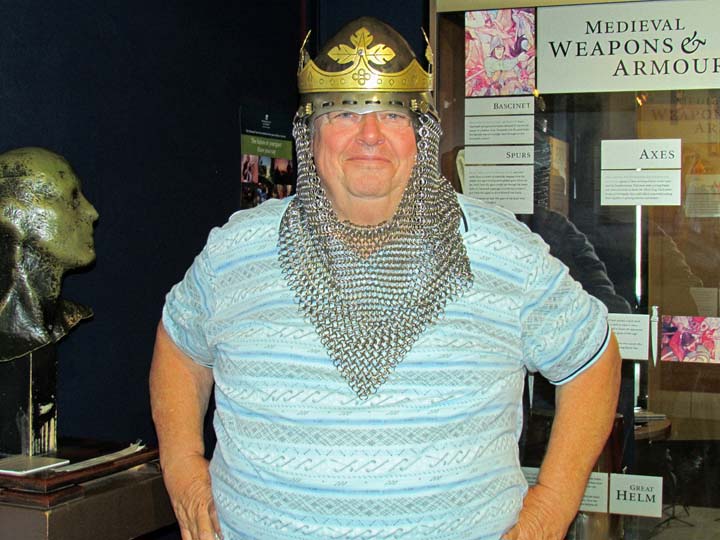
Battle axe battles
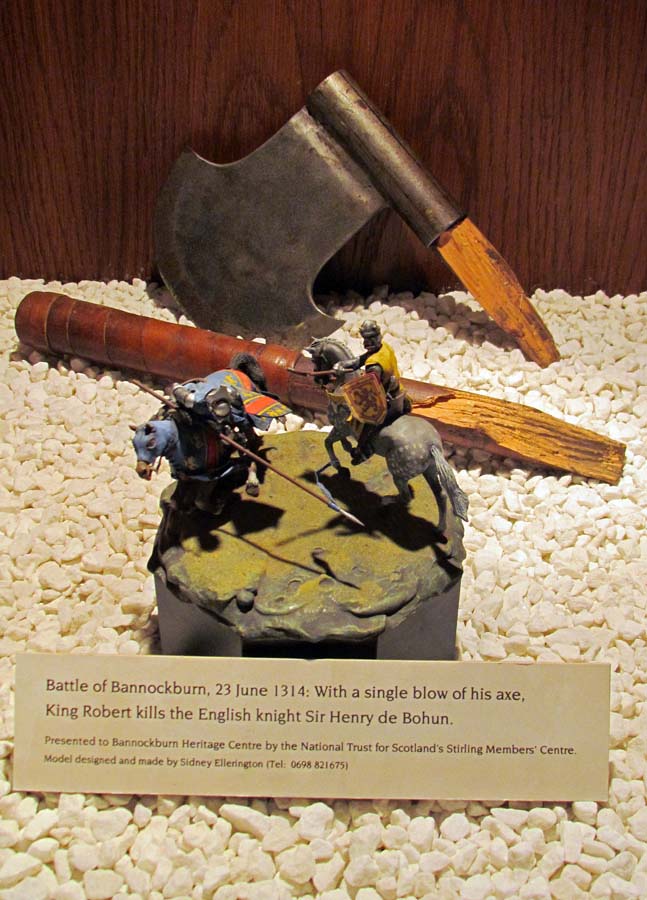
There were a number of models, both life-size and miniatures to view
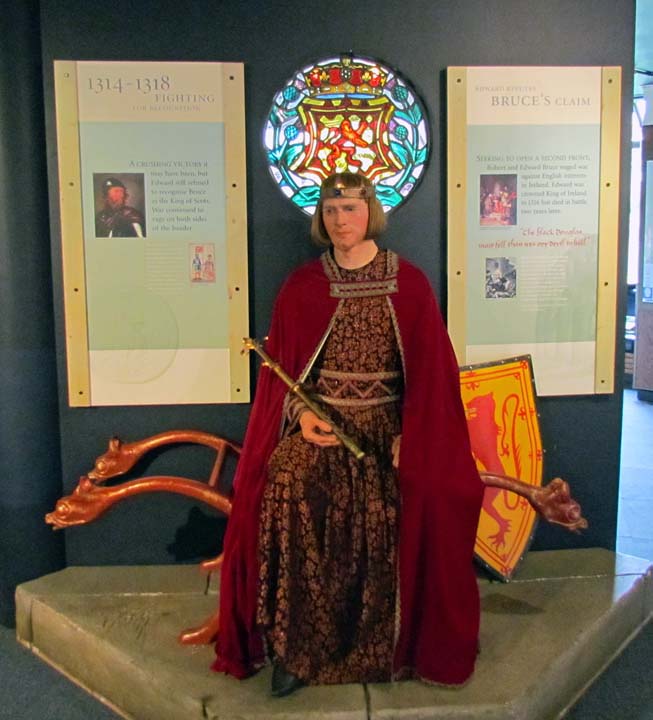
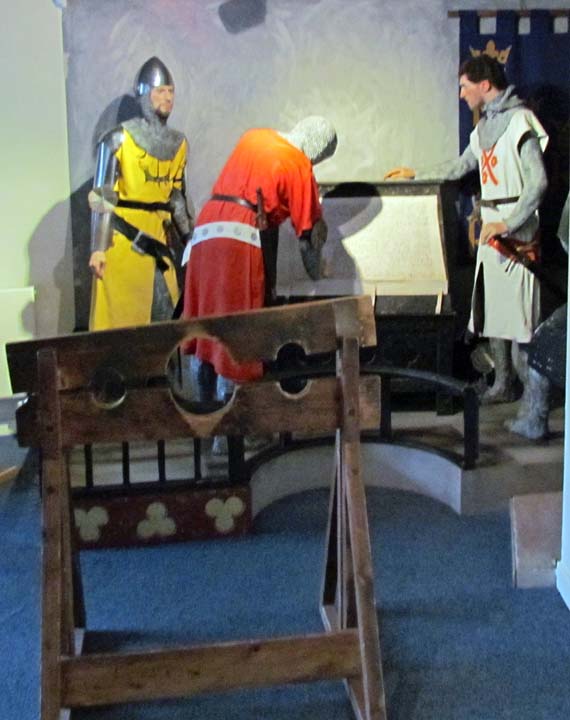
Pray tell, Who is this fierce knight with shield and armor who attacked me?
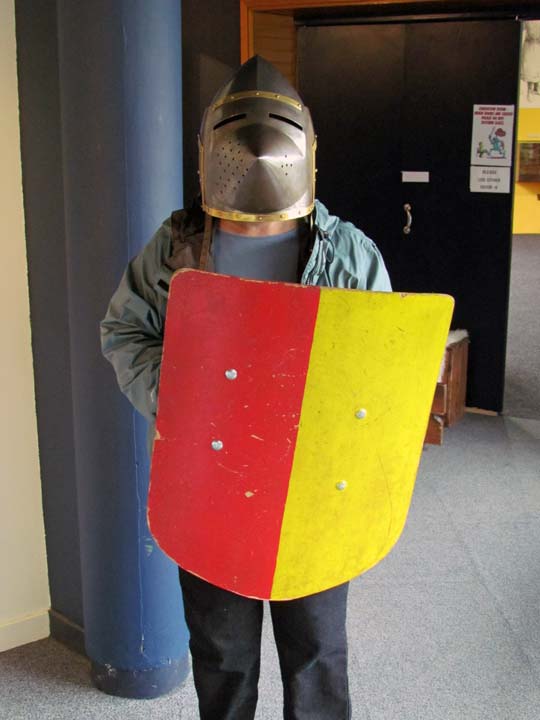
The knight puts down the shield and starts to remove the armor - just who is it?
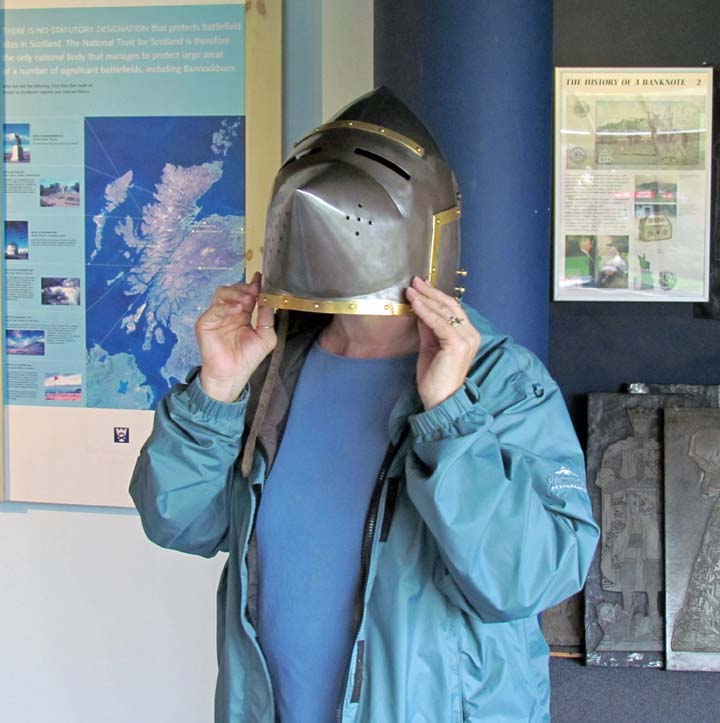
My old arch enemy - Knight Jackie
I must run !
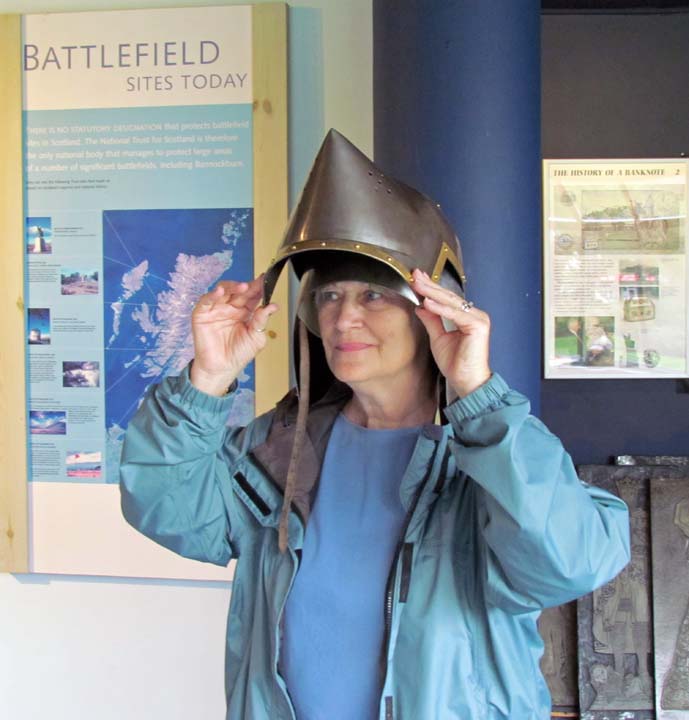
A plaster mask of Robert the Bruce
One of only three known to be in existence
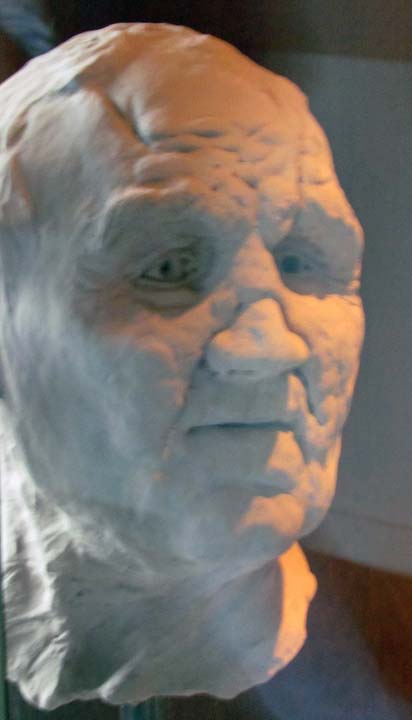
~ ~ ~ ~ ~ ~ ~ ~ ~ ~ ~ ~ ~ ~ ~ ~ ~ ~ ~ ~ ~ ~ ~ ~ ~ ~ ~ ~ ~ ~ ~ ~ ~ ~ ~ ~ ~ ~ ~ ~ ~
And we are on our way again - to the hotel and in the morning, the airport.
This was our last stop